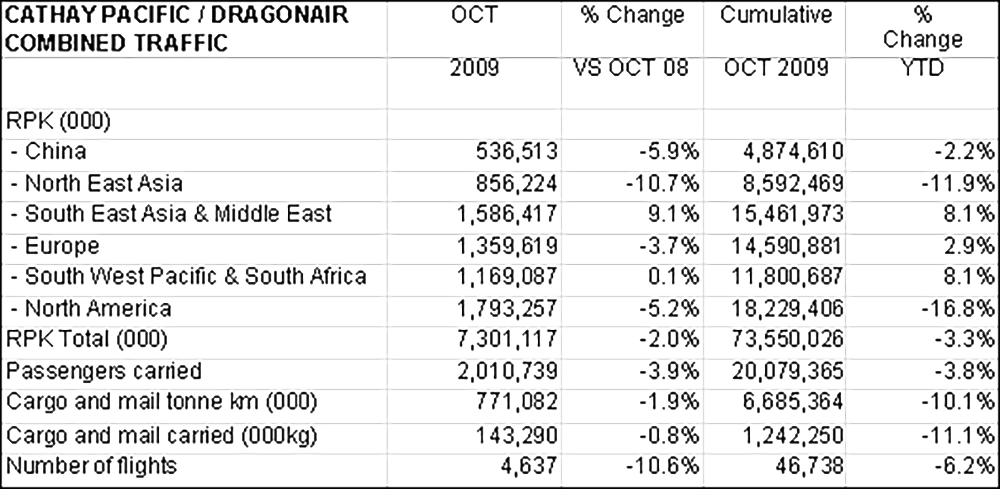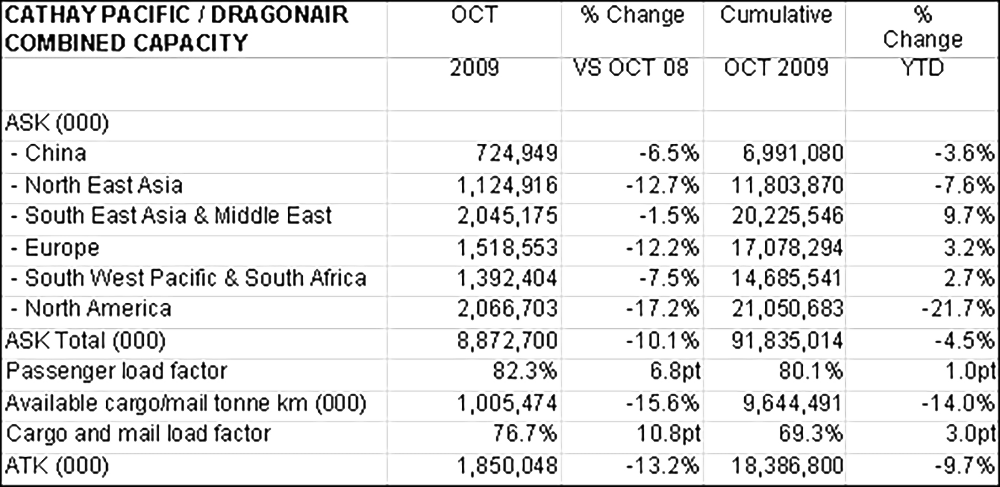Copyright © 2024 Swire Pacific Limited. All rights reserved.
Cookies and Privacy: We use cookies to enhance your user experience on our website. Please indicate your cookie preference. For more information, please read our Cookie Policy and Privacy Notice.
Cathay Pacific Airways today released combined Cathay Pacific and Dragonair traffic figures for October 2009 that show both passenger numbers and cargo and mail tonnage down on the same month last year.
Cathay Pacific and Dragonair carried a total of 2,010,739 passengers in October - down 3.9% against the same month in 2008 - while capacity for the month, measured in available seat kilometres (ASKs), was down by 10.1%. The month's load factor was 82.3% - a rise of 6.8 percentage points. For the year to date, the number of passengers carried has fallen by 3.8% compared to a capacity decline of 4.5%.
The two airlines carried a total of 143,290 tonnes of cargo and mail last month, down 0.8% on October 2008, while the cargo and mail load factor rose by 10.8 percentage points to 76.7%. Capacity for the month, measured in available cargo/mail tonne kilometres, was 15.6% down. For the year to date, tonnage has fallen by 11.1% against a capacity reduction of 14.0%.
Cathay Pacific General Manager Revenue Management Tom Owen said: "The seasonal upturn in our passenger business that began in September continued through into last month. Though our overall passenger numbers saw a year-on-year drop in October, the fall was below the reduction in capacity over the same period - hence the sharp rise in the month's load factor. The pick-up in premium traffic was helped by events such as the Canton Fair, but volumes and yields were still below October 2008, when the financial crisis had already begun to have an impact."
Cathay Pacific General Manager Cargo Sales & Marketing Titus Diu said: "October was the best month of the year so far for our cargo business, with strong demand out of the key Hong Kong and Shanghai markets leading to high load factors, particularly to North America and Europe, and a welcome increase in yield. We expect demand to remain strong through to mid-December, though it is still too early to say whether we are seeing a sustained recovery."

